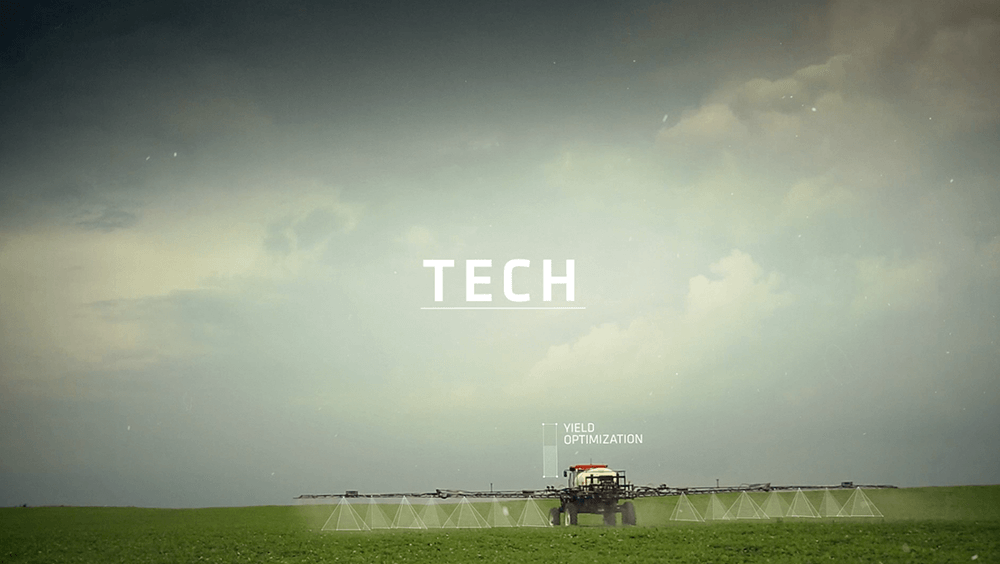Ag Data: Where the Future Is (Finally!) the Present

Farmers and agronomists have had a tumultuous relationship with ag technology since the 1990s, says Aaron Ault, senior research engineer for the Open Ag Technology Group at Purdue University, project lead for the Open Ag Data Alliance (OADA) and an Indiana farmer. Ault’s recent presentation at the 2016 Answer Tech® Summit in Dallas chronicled the successes and stumbles ag tech has experienced over the past 25 years, and how we got on the right track to gather, share and use ag data.
A history of ag technology
Ault gave a brief (and humorous) rundown of where ag technology has been over the past quarter century. Practical, useful technology such as Autosteer has been a high point, he says, while the industry has had a tougher time getting traction with other advancements such as satellites and yield maps.
“In return for spending lots of money, time and effort on ag technology, farmers have gotten really confusing interfaces, really confusing experiences and very few answers over the years,” said Ault. “They kept hearing, ‘Data is the future!’ But they were thinking, ‘Doesn’t the future eventually have to be the present?’”
Letting farmers farm
“Farmers don’t want to do the data stuff; they want to farm,” said Ault, and posed this question to local agronomists: “How can you, as the boots on the ground — the cooperatives that are out there with them — make it possible for farmers to spend more time farming and less time wrangling data? That is the opportunity for you to bring value to them.”
Open-source software, which allows ag technology tools to talk to each other, is becoming more available, and this will help, said Ault. The cloud also helps things work better together, and farmers do find value in using cloud-based apps, he added.
What the future holds
So what is the true promise of ag data? Ault offered this: We have useful software tools that are so nonintrusive to our daily lives that we quit talking about data altogether, but rather talk about the insights technology is providing.
“Data is boring,” said Ault. “The word doesn’t even mean anything. It means ‘plural stuff.’ The thing that’s interesting is, ‘That rootworm damage spot lost me 13 bushels per acre.’ That’s what we’re trying to get to in digital agriculture.”
WinField is continually developing technologies that make it easier for farmers and agronomists to work together to help increase yield and bottom line potential, and keep data sharing solely within the purview of the farmer. One example is the WinField Data Silo™. This technology leverages the Google Cloud Platform, which allows users to store data and flow it across decision ag platforms to help them work with their retail partners to make data-driven agronomic decisions. WinField Data Silo™ users can set parameters on whom they want to share data with, and it will be shared automatically with only those people.
Bottom line: The future of ag technology is here. To learn more about what WinField is doing in this exciting space, talk with your WinField retailer or visit answertech.com.
A history of ag technology
Ault gave a brief (and humorous) rundown of where ag technology has been over the past quarter century. Practical, useful technology such as Autosteer has been a high point, he says, while the industry has had a tougher time getting traction with other advancements such as satellites and yield maps.
“In return for spending lots of money, time and effort on ag technology, farmers have gotten really confusing interfaces, really confusing experiences and very few answers over the years,” said Ault. “They kept hearing, ‘Data is the future!’ But they were thinking, ‘Doesn’t the future eventually have to be the present?’”
Letting farmers farm
“Farmers don’t want to do the data stuff; they want to farm,” said Ault, and posed this question to local agronomists: “How can you, as the boots on the ground — the cooperatives that are out there with them — make it possible for farmers to spend more time farming and less time wrangling data? That is the opportunity for you to bring value to them.”
Open-source software, which allows ag technology tools to talk to each other, is becoming more available, and this will help, said Ault. The cloud also helps things work better together, and farmers do find value in using cloud-based apps, he added.
What the future holds
So what is the true promise of ag data? Ault offered this: We have useful software tools that are so nonintrusive to our daily lives that we quit talking about data altogether, but rather talk about the insights technology is providing.
“Data is boring,” said Ault. “The word doesn’t even mean anything. It means ‘plural stuff.’ The thing that’s interesting is, ‘That rootworm damage spot lost me 13 bushels per acre.’ That’s what we’re trying to get to in digital agriculture.”
WinField is continually developing technologies that make it easier for farmers and agronomists to work together to help increase yield and bottom line potential, and keep data sharing solely within the purview of the farmer. One example is the WinField Data Silo™. This technology leverages the Google Cloud Platform, which allows users to store data and flow it across decision ag platforms to help them work with their retail partners to make data-driven agronomic decisions. WinField Data Silo™ users can set parameters on whom they want to share data with, and it will be shared automatically with only those people.
Bottom line: The future of ag technology is here. To learn more about what WinField is doing in this exciting space, talk with your WinField retailer or visit answertech.com.

